

9 Popular Boats With Lifting Keels (With Pictures & Prices)
If you are looking for a sailboat, you might want to consider one that features a lifting keel.
Lifting keels allow you to explore shallower waters, reduce drag, or other advantages when the keel is lifted.
Here are the boats you should check out first!
Table of Contents
What is a Lifting Keel?
As you probably know, the keel of a boat is the longitudinal structural device on the bottom of your hull.
On a sailboat, the keel serves as an underwater fluid machine that helps to minimize the lateral motion of the vessel that is under sail, as well as acting as a counterweight to the lateral force that comes from the wind on the sails which can cause it to roll to the side.
A lifting keel, sometimes known as a centerboard, is a keel that retracts into the hull of a sailboat or pivots and allows for certain advantages.
A lifting keel’s main function is to provide a lift to counter the lateral force that is created by the sails. This allows the sailboat to move other directions other than downwind.
Because these keels lift into the hull, you would be able to take your vessel into shallower waters.
In addition, a lifting keel is ideal for:
- Moving the center of resistance.
- Reducing drag.
- Removing the boat from the water and trailering it.
Centerboards are different than other types of keels, such as a ballast keel, because they do not contribute to the overall stability of the vessel because they are not as heavy and instead they only provide lateral resistance.
Great Boats with Lifting Keels Under $30,000
If you are looking for a boat that features a lifting keel and all that comes with it, you are in luck!
Below, I have compiled a list of great boats that feature a lifting keel.
1. Parker 235 Mini Cruiser

The Parker 235 Mini Cruiser is a small sailboat that should be great for sailors who would like to trailer their boat and explore multiple destinations.
This sailboat exhibits excellence both afloat and while onshore. This features high performance due to its long waterline, stable hull, and a deep low center of gravity.
This boat features a custom boat trailer and is easy to launch and as well as to trailer.
This boat is 23’ 5” in length. Despite its smaller size, there is no compromising with the internal accommodations. The boat featured 2 berths, a galley, and a head compartment.
This boat also has a lifting keel which reduces the draft by 3’ 6”.
This boat can be found used at a price of around $20,000.00.
RELATED: Common Problems With Parker Boats .
2. Hunter 22

The Hunter 22 sailboat is a perfect small daysailer that features the capacity to stay aboard overnight. This vessel is ideal for up to five passengers and features a large cabin.
This boat is 21’ 4” in length and is easy to launch, rig, and trailer when needed.
This boat features a lifting keel that reduces draft by 2’ 6” when lifted up.
This boat has a starting price of $29,990.00.
3. BayRaider 20
The BayRaider 20 manufactured by Swallow Yachts, is a small open sailboat that is ideal for families or sailors who are looking for something stable and safe.
This boat has features that make it ideal for beginner sailors including the ability to keep the ballast tanks full for added stability.
This vessel also features a two-masted ketch that gives an advantage over a single-mast rig because it allows for a quick reduction of sail.
This boat is almost 20 feet long and is light enough to be trailered or handled by one person.
This boat features a lifting keel that reduces the draft by 3.8 feet when lifted.
This boat has a starting price of $27,750.00.
4. Catalina 22 Sport

Catalina strives to encourage sailors who are interested in racing with the Catalina 22 Sport. This boat is small and measures at 23’ 10”.
This boat also has a cabin that features berths for up to 4 adults. This boat is a great choice for those looking for speed and easy maneuverability while still offering the ability to stay aboard overnight.
This boat has a lifting keel that reduces the draft of the boat by 3’ 2” while lifted.
This boat has a starting price of $23,550.00.
5. Marlow-Hunter 15

The Marlow-Hunter 15 is a safe and versatile daysailer for families or individuals who new to sailing. This boat was designed with sailing novices in mind and features high sides, a contoured self-bailing cockpit, and a wide beam that was built for comfort.
These safety features will allow peace of mind for parents and brand new sailors.
This vessel is also easy to trailer, rig and launch.
With a length of 14’ 6”, you can fit a crew of up to four onboard but this boat can also be handled solo.
This vessel features a lifting keel that reduces the draft by 3 feet when lifted.
This boat features a highly affordable starting price of $10,123.00.
Models Between $30,000.00 and $100,000.00:
6. feeling 326.
The Feeling 326 was manufactured between the years of 1987 and 1999. This boat is a cruising sailboat that is 32’ 6” in length and comes with 2 cabins, 6 berths, and 1 head.
This boat is great if you plan to go out for long journeys with multiple people.
Even though this boat is an older model, you should still be able to expect quality sailing from them.
This boat also features a lifting centerboard that reduces the draft by 2’ 7”.
Depending on the year and the seller of the vessel, these boats are selling for an average price of between $30,000 and $45,000.00.
7. Norseboat 21.5

The Norseboat 21.5 is the largest model in the Norseboat line with a length of 21’ 10”. You can get either a Cabin or an Open model for this boat.
You can customize this vessel based on your needs and other factors. You can construct a standard or semi-custom Norseboat.
This boat features a lifting centerboard that reduces draft by 2’ 4” when lifted.
Depending on the layout and chosen options, this boat has a starting price of $37,490.00.
Boats Over $100,000.00:
8. alubat ovni 365:.

From the manufacturer Alubat, the Ovni 365 combines their experience in centerboards and high performance to create a vessel that is both comfortable and high performing.
This boat is great whether you are traveling upwind or downwind. This boat is great for both long trips or for simply cruising up and down the coast.
This boat is 39.17 feet long and features a galley as well as a front and rear cabin.
This boat features a lifting centerboard that reduces the draft by about 5.18 feet when lifted.
Depending on the year and specifications of this vessel, the price could range from $100,000 to $300,000.
9. Southerly 42 RST

Southerly makes a mono-hull 42 RST that is an offshore deck saloon sailboat that was built for cruising. This boat has a length of 42’ 2” and could be equipped with either 2-3 cabins, 4-8 berths, and comes with 2 heads.
This boat is great for taking multiple people out on the water. While these are no longer in production, they were made between the years 2007 and 2017.
This boat has a lifting keel that reduces the draft by 6’ 1” when the keel is up.
Depending on the year and the condition, this boat could cost a minimum of $250,000 but if often over $300,000.00.
10. Gunfleet 43

The Gunfleet 43 is a top of the line vessel with many options for customization. This boat is large and luxurious with a length of 44’ 1”.
This boat features a standard layout with either 2 or 3 cabins, or you could get a custom-built version that also has 3 cabins.
This vessel offers high-end luxurious features that are ideal for long trips and even vessels that you would consider for living aboard.
This line features an optional lifting keel that would reduce draft by 4’ 4” when lifted.
This luxurious and custom-crafted vessel has a large price tag of over $800,000.00.
Keel Types and Performance:
The lifting keel is not the only keel that is available for your vessel. Each keel type is built for a different type of performance.
Some of these keel types include:
- Fin Keel with Spade Rudder
- Fin Keel with Skeg Rudder
- Lifting or Swing Keel
- Twin or Bilge Keel
Make sure before you buy your vessel, you consider the type of performance you are looking for on your vessel and research the ideal keel for you.
This can help you when selecting which boat to purchase and will help you get the maximum performance and use out of your vessel.
If you do not buy the boat with the proper keel type , then you will not get the necessary performance needed. Some keels are made to be more stable, some are made to be more versatile, and some such as the lifting keel is made to be able to be optional depending on what type of activity you plan to achieve in your vessel.
A lifting keel is a great option for those who are looking for shallow draught, speed, efficiency, and the ability to plane your vessel early.
The lifting keel is not ideal if you are planning to use it to offer additional stability. If you are looking for additional stability, you will want to look at different and heavier keel options.
If that sounds ideal for you, you will benefit from one of the many daysailers or overnight vessels that offer a lifting keel listed above.
Click to share...
Yachting World
- Digital Edition

Ovni 370 review – go-anywhere shoal draught cruising
- Toby Hodges
- July 19, 2022
Ovni’s smallest new model, the Ovni 370 is packed with smart thinking to appeal to those who want to cruise all waters, says Toby Hodges
Product Overview
Manufacturer:, price as reviewed:.
With its distinctive range of bare aluminium lift-keel cruisers, Alubat’s Ovni brand has been synonymous with bluewater cruising since the 1970s. After a barren period it came out with a contemporary new Ovni 400 two years ago and has followed that up with an arguably more innovative and approachable shorter model, the Ovni 370.
The Ovni 370 shares some of the styling of the 400, in particular the angular and voluminous look with full forward sections, so it shan’t win any beauty prizes. However, Ovnis have always attracted more for practicality than aesthetics, and this model certainly packs in the features for its length.
The Les Sables-d’Olonne yard wanted the Ovni 370 to have a true deck saloon, a panoramic heart as opposed to the (optional) lower single level format of the 400 – clearly a popular decision which all 17 buyers so far have chosen.
Once you accept you need to climb up and down steps to get through the boat, the benefits are multifarious. This is particularly true of the Ovni 370, which has many of the staple ingredients bluewater sailors will look for even at this size, including a deep, protected cockpit, a pilot berth in the deck saloon, wet hanging stowage and a proper navstation.
Another benefit is the stowage space below a deck saloon – enough for 300lt water and 300lt diesel tanks in the Ovni’s case.

The transom skirt with arch above is a recipe Ovni has perfected. A block and tackle system is used for the dinghy and the liferaft has a prime central location. Photo: Andreas Lindlahr/EYOTY
Built for distance
Alubat says the design development began after it received many requests for its old 365 model. However, that was a Category B (offshore) rated design and the majority of its clients today are couples who want to go long distances. Nina Karlseder from Création Brouns Architecture, one of the five designers who worked on the Ovni 370, explained the major challenges involved with trying to make a Category A yacht with a lift keel at this size and volume.
The keel, which lifts completely inside the boat to allow for beaching, needed to be kept light enough to raise manually yet heavy enough for stability purposes when lowered.
Meanwhile the hull needed to be stable and light in the right places. So a light aluminium plate was chosen, milled into a NACA profile, and over three tonnes of ballast was used in the hull to make up the necessary righting moment. The 260kg ballasted centreboard has a safety release in case of grounding and a plate protecting the bottom of the boat for drying out.
The result, the yard argues, is the least expensive new Category A lift keel yacht. But what is it like under sail?

The voluminous bow and hard chines create significant living space and helped the designers achieve a prime goal of meeting Category A ocean-going requirements. Photo: Andreas Lindlahr/EYOTY
Sailing the Ovni 370
We had a very pleasant late afternoon sail off La Rochelle in 8-9 knots true wind. As mentioned, the centre of gravity needs to be strictly controlled with a centreboard design, hence the relatively short rig and a modest 33m2 Solent jib. The only option for added oomph here is a laminate square-top main and running backstays, as the test boat sported.
Still, the Ovni 370 is not blessed with a shape designed for pointing or upwind speed. Her angular shape has plenty of wetted surface area and in these single figure windspeeds, 4-4.5 knots were average beating speeds – and at wide tacking angles.
As we know, though, no well-planned cruise should involve sailing to windward, hence we spent the majority of the time under Code 0 averaging over 5.5 knots reaching at 60° to the apparent wind. The helming experience was enjoyable – nice and light on the dual rudder steering with good balance and some feedback.

The views and natural light benefits of a deck saloon. The linear galley has good stowage and solid fiddles, and ajdoins a practical navstation aft. Photo: Christophe Favreau
The helmsman has a snug area between the aft end of the coamings and the davits with clear sightlines forward, while the primaries are within easy reach with handy tailing lockers under the cockpit benches. The mainsheet and reefing lines are led to the coachroof winches, which is a good, protected position for a crewmember, but it does mean that those sailing short-handed will need to rely on the autopilot while they trim sails.
A fixed aluminium dodger is an option, but the very deep cockpit already offers excellent protection behind the high coamings and sprayhood (which links to the bimini on the arch). Sturdy handrails and toerails, good non-slip and a high coachroof make it feel safe and robust around the deck. The foredeck feels huge, and a double bow roller allows the setting of two anchors.

Generous berths and plenty of light in both cabins. Photo: Christophe Favreau
Ovni 370 accommodation
The two-cabin plan makes excellent use of the interior space. The saloon layout is particularly smart, with a table that drops to create a large daybed or pilot berth. The latter uses a carbon pole for a backrest (with cushions), which can be moved to double as a leeboard.
A large wet hanging locker is located beside the companionway, and the decision to split the heads and shower (more potential wet hanging) works well. The heads links through to a work/utility cabin aft, where a bunk can be fitted, but this primarily serves as a wonderful amount of stowage for long term cruisers.
Abundant natural light and lots of light trim make for a modern, fresh look, albeit with a few sharp edges on the window surrounds and bulkhead coverings on the prototype we sailed. The interior is insulated with sprayed cork above the waterline and owners can choose whether to leave this exposed or cover with headlining.
The port aft cabin is capacious, with tall headroom, wide berth, good stowage and a large porthole. Headroom reduces to 5ft 10in in the entrance to the forward cabin. On the test boat this had an extra wide but relatively short (1.85m) berth, and a vast shower room with space for a washing machine abaft the main bulkhead.
Ovni has since addressed the balance of these areas, pushing the bulkhead further aft to increase the berth length – a bonus of building in aluminium over a fixed mould.
If you enjoyed this….
Yachting World is the world’s leading magazine for bluewater cruisers and offshore sailors. Every month we have inspirational adventures and practical features to help you realise your sailing dreams. Build your knowledge with a subscription delivered to your door. See our latest offers and save at least 30% off the cover price.
The concept and design of the 370 is commendable. It fulfils a valuable and obviously popular niche. It’s packed with dependable features, feels robust throughout and offers a more affordable and approachable size level for go-anywhere shoal draught cruising. So much so it makes you wonder who might buy the larger 400 now. It is comparatively good value for an aluminium cruiser, however the price has already increased 13% since last year due to materials costs. It has a quirky, utilitarian style, and is not for those who wish to get places quickly (particularly upwind). But for a new distance cruiser at this size for modest paced sailing in comfort it would make my shortlist.

What are the pros and cons of different keels?
We all sail for different reasons, in different cruising grounds and use our yachts differently, so it makes sense that there is no one-size-fits-all keel design. At Sirius, however, we like to make the perfect yacht for each individual owner. One of the ways we serve our customers is our choice of keels – at least six different options for each model. It’s one of the ways we stand out – or should that be stand up?
We offer three styles of keel: fin, twin and lifting swing keel. All of our keels excel in many ways, but every design does have drawbacks – this is not unique to Sirius, but the keel affects the way you use the boat, so it’s important to choose the right one for you.
These are the keels we currently offer:
Standard Fin (310 DS, 35 DS, 40 DS) Performance Fin (310 DS, 35 DS, 40 DS) Medium Fin (310 DS, 35 DS, 40 DS) Shallow Fin (310 DS) Shallow Twin (310 DS, 35 DS, 40 DS) Performance Twin (35 DS, 40 DS) Lifting Swing Keel (310 DS, 35 DS, 40 DS)

Does the choice of keel compromise ocean capability?
For Sirius yachts, absolutely not. It’s important to realise that choosing one keel style over the other does not affect the yacht’s righting moment or compromise its ocean-going capabilities at all!
Whichever keel you choose, deep or shallow, twin or fin, they all have the same stability. This is achieved by putting more weight in the bulbs of the shallower keels as the shorter lever can be balanced with higher weight. Most of the blue water cruising and circumnavigations in Sirius Yachts have been made with twin-keel or reduced/shallow fin keel yachts.

Does keel choice affect performance?
As our shallow keels are heavier the weight dampens the yachts’ motion at sea, but as a downside, you have more weight to move with sails or engine. Once you’re moving there isn’t a difference but when tacking or gybing, or when not steered well, you will lose a bit in sailing performance. The shallower draught yachts also lose a few degrees to windward compared to their deeper keeled sisters, but they are still good all-round performers. Our customers with racing backgrounds always try to go for a keel as deep and light as their sailing area permits, either with a single or twin keel.

Pros and cons of fin keels
The standard keel on our yachts is a fin keel. Most sailing boats today use a fin keel because it gives a good all-round performance on all points of sail. By keeping the ballast lower it gives the most comfortable motion. The main downsides are that the draught (the depth of water required to stay afloat) is the greatest, and it’s very important to avoid running aground on a falling tide. Fin keel boats cannot dry out without additional support, either from a harbour wall or by fitting a pair of beaching legs. Some fin keel yachts are not built strongly enough to stand on their keels when out of the water, so they can’t dry out alongside a harbour wall and they need to be kept in a special cradle when stored ashore to avoid the risk of the hull deforming under its own weight. By contrast, all Sirius yachts can stand on their keels for any length of time with no problem at all.
We offer four types of fin keel. The standard fin is available on the 310 DS, 35 DS and 40 DS and is fully cast-iron. It offers the best value, good performance, and excellent responsiveness. It is the deepest of our fixed-keel options, so if you want less draught you may want to look at our other fin keels.
We also offer a performance fin keel for all our models. This uses a cast iron fin with a lead bulb at the tip (bottom). The structural strength of cast iron means the fin is the slimmest profile, but lead is denser than iron so the same volume of lead will weigh around 1.4 times more than cast iron, giving more righting moment. The heavier, softer lead down low has less volume in the bulb so achieves a slimmer profile with less drag and therefore better performance.
A lead bulb is also safer if it hits something. Lead can absorb 60% of the energy in flexing and deformation so that only 40% of the force will be transferred to the laminated structure of the keel reinforcement. A lead bulb is very forgiving and easy to reshape and will not start to rust where the coating is damaged. We can use less volume of lead than iron, and achieve better stability than a wholly cast-iron keel. We can also reduce the depth of the keel and retain excellent stability. However, lead is more expensive than cast iron and the bulb must be attached very securely to the iron fin, so this option does cost more.
If you want less draught, we also offer a medium fin. This reduces the draught of the 310 DS and 35 DS by around 40cm/1ft 4in and 55cm/1ft 9in on the 40 DS. Like the performance fin, it uses a cast iron fin with a lead bulb. To retain the keel’s grip in the water it has to have a longer chord (the distance from fore to aft). While this gives the boat better directional stability, it does make her a little less responsive and a little slower to manoeuvre.
On our 310 DS, we offer a shallow fin option – a special version for very shallow cruising grounds. This fin keel offers the least draught of any of our fixed keel options at 1.15m/3ft 9in and draws 10cm/4in less than the twin keel version. The keel has a significantly longer chord (2.24m/7ft 4in compared to 0.7m/2ft 3in of the standard keel) so she has the reassuring directional stability of a long-keeled yacht but with better manoeuvrability.

Pros and cons of twin keels
Our twin keels are the most popular option. About 70-80% of all Sirius Yachts are delivered with them – and on the 40 DS it’s 90%. Some folk still believe there is a big performance penalty with twin keels. In the past this used to be true but it’s no longer the case with modern twin keel designs, from Sirius at least. We have conducted many two-boat comparison tests, often battling for hours, by ourselves, with owners, and for sailing magazines and we have found that there may only be one or two boat lengths of difference at the end of a long windward leg, if at all. At the end of many of these comparison tests, the crews could not point out which of the boats had the twin keel.
If you cruise tidal areas, twin keels will reward you time and time again. Not only do they give you a shallower draught than the typical fin keel, they also give you the ability to dry the yacht out, whether that’s for a motion-free night’s sleep, to explore cruising grounds others cannot reach, or just for cheaper mooring and maintenance costs.

We offer two styles of twin keels; performance and shallow draught. Both options have a cast iron fin with a lead bulb. The performance keels have a deeper draught and a thinner chord so they act and feel a bit livelier when sailing and manoeuvring. The shorter keels have a longer chord, but give you the ability to navigate shallower areas. Like all keel designs, twin keels do have some downsides. They are more expensive than fin keels, and when you’re sailing fast in choppy seas at a steep angle of heel, you can occasionally get a slapping sound when an air pocket is caught and pressed out under the windward fin. Lastly, we’ve yet to meet an owner who enjoys antifouling between the keels. Thankfully it only has to be done once a year and with twin keels you might get away with doing it less frequently. A twin keel yacht can be kept on a drying mooring, where fouling is reduced because the hull spends more time out of the water. And when you’re off cruising it’s easy to give the bottom a quick scrub while the yacht is dried out.
Our yachts will happily sit on their keels on a hard surface, like a drying grid, or for winter storage but on softer surfaces we use the rudder for additional support. The rudders on our twin keel yachts are specially reinforced for this: we use a Delrin sheave to take the weight of the hull and the tip of the rudder has a wide, foil-like foot to spread the weight.

A lifting swing keel
We are one of a few manufacturers to offer a lifting swing keel. There’s a lot of confusion with the term ‘lifting keel’, it seems to encompass all yachts that have centreboards, variable draught, lift-keels or swing keels. To us, a lifting keel boat should have all the ballasted weight of the boat in the keel, and that keel needs to be retracted into the hull.

Technically, a lifting keel is a keel that can be lifted or lowered and gives the boat the ability to dry out when the tide goes out. A lift-keel is a ballasted keel that raises and lowers vertically. A swing keel has a ballasted fin that has a single pivot point and the keel swings up into the boat. There are other variants of design, for example some have a lifting keel to reduce the draught of the vessel but they cannot dry out on it, others have a ballasted keel and ballasted grounding plate. All these examples have a keel that does two things: keep the boat upright and stop her sliding sideways. Our swing keel is designed with a NACA profile to give the most efficient performance.
Centreboard yachts have a centreplate to provide grip in the water and reduce leeway. The plate may carry only 15-20% of the ballast but the rest of the yacht’s ballast is within the hull and/or in the grounding plate. This is called an “integral keel” and is more common as it’s less complicated to build. The lower a yacht’s ballast is located, the better her stability, the more comfortable her motion and the better she stands up to her sail area. The most efficient place for the ballast is as low down on the deepest keel possible – this is why race boats have deep skinny keels with large torpedo-shaped bulbs on the bottom, but they don’t make practical cruising sailboats.
Our keel designs have more weight in the tip (bottom) – using a bulb on the fin and twin keel design and flaring the lower sections on our lifting swing keel yachts. You don’t have this with centreboard and integral keel yachts.
It might be surprising, but a lot of owners come to us thinking that a lifting swing keel is the best option for them. Sometimes it is, but about 98% of customers who approach us because we offer swing keels end up sailing away on a twin-keel Sirius.

The downsides of a lifting keel
A lifting swing keel does give you more cruising options. It will lift should you run into something and, of course, it gives you the shallowest draught. But that difference is only 40-50cm (1ft 4in to 1ft 8in) less draught than our shallow twin keel option. The lifting keel increases the complexity of the build and the final cost of the yacht; it also sometimes limits the internal layout and engine drive options, and you need to have twin rudders too. Twin rudders make the boat less manoeuvrable in a marina – you can opt for a third central rudder which does improve the handling, but again comes at an extra cost.
On the lifting swing keel, 40 and 310 owners are restricted to the use of a shaft drive, which is less efficient and you have to accept a bit more noise and vibration. When drying out, the drive is more vulnerable to damage, whereas it’s totally clear when taking the ground on twin keels. With twin keels, you also do not have to worry about something sticking out of the beach or stones lying around because the hull is high above the ground. With the hull up high, you do not have to dig a hole in the sand and slide down on your stomach to check or change your anodes as you would on a swing keel.
Sailors who are attracted to the idea of a lifting swing keel should carefully consider the pros and cons to compromise the least. When owners understand the repercussions of choosing a lifting keel yacht, many of them feel it restricts their options too much. They could have a lifting keel or they can sail with twin keels, dry out, have better close-quarters handling and save money in the process. Unless you need the shallowest possible draught – 0.75m (2ft 5in) on the 310 DS, 0.9m (2ft 11in) on the 35 DS or 0.95m (3ft 1in) on the 40 DS – a twin keel might well be a better option.

How are the keels attached?
The design of the keel is important but the way they are attached is just as important, if not more so. All of our fixed keels are through-bolted. Every keel has a wide flange at the root (top) of the keel and the flange sits into a reinforced recess in the hull. The flange and the recess work together to spread the loads of the keel/s into the yacht’s hull. The keels are bonded and bolted to the hull. We use up to twelve 20mm and 24mm bolts (per keel) and these go through rolled stainless steel backing plates inside the hull to spread the bolt loads evenly into the fully laminated keel grid which goes all the way up to the chainplates and also carries the mast support.
For our lifting swing keel, we laminate a substantial keel box as part of the hull to accept the keel and the hydraulic mechanism needed to retract the keel into the hull. Unlike most other boatbuilders we don’t use a grounding plate to take the weight of the yacht, our yachts sit on the length of the leading edge of the keel. Integral keels with the majority of the ballast in the grounding plates move the ballast (weight) from low down in the keel to inside the hull. This negatively affects the stability as the more weight you have lower down, the better.
We also don’t like grounding plates because they bring the hull in contact with the ground. By leaving 10-15 cm (4-6in) of the keel out of the hull when it’s retracted, most of the time the hull is kept clear of the beach and anything that could damage it.
The problem with too much form stability
With only 15-12% of their ballast in the centreboard, most lifting-keel yachts cannot rely on keel weight for stability so their hulls need to be designed with extra form stability instead. This means the hull sections have to be much wider and flatter. A flat-bottomed hull is not what you want for a comfortable ocean cruising yacht; it isn’t sea-kindly or easy to steer in waves and gusty winds conditions. We don’t make that compromise at Sirius. With all the ballast in the swinging part of our swing keel design, we can use the same seaworthy, ocean-capable hull shape designed for our yachts with fixed keels.
If you don’t know which keel would be best for your Sirius, contact us to discuss the type of sailing you intend to do, where you want to sail and what your cruising aspirations are.
General Manager – Torsten Schmidt SIRIUS-WERFT GmbH Ascheberger Straße 68 24306 Plön/Holstein
Fax: 0049 – 4522 – 744 61-29
Receive regular updates from Sirius Yachts
Subscribe to our email newsletter
Privacy Overview
| Cookie | Duration | Description |
|---|---|---|
| cookielawinfo-checkbox-analytics | 11 months | This cookie is set by GDPR Cookie Consent plugin. The cookie is used to store the user consent for the cookies in the category "Analytics". |
| cookielawinfo-checkbox-functional | 11 months | The cookie is set by GDPR cookie consent to record the user consent for the cookies in the category "Functional". |
| cookielawinfo-checkbox-necessary | 11 months | This cookie is set by GDPR Cookie Consent plugin. The cookies is used to store the user consent for the cookies in the category "Necessary". |
| cookielawinfo-checkbox-others | 11 months | This cookie is set by GDPR Cookie Consent plugin. The cookie is used to store the user consent for the cookies in the category "Other. |
| cookielawinfo-checkbox-performance | 11 months | This cookie is set by GDPR Cookie Consent plugin. The cookie is used to store the user consent for the cookies in the category "Performance". |
| viewed_cookie_policy | 11 months | The cookie is set by the GDPR Cookie Consent plugin and is used to store whether or not user has consented to the use of cookies. It does not store any personal data. |
Swan 115 S Lifting keel
Sailboat specifications.
- Last update: 24th March 2020
Swan 115 S's main features
Swan 115 s's main dimensions, swan 115 s's rig and sails, swan 115 s's performances, swan 115 s's auxiliary engine, swan 115 s's accommodations and layout.

Similar sailboats that may interest you:
- Italia: +39 339 177 4412 International: +39 335 669 4377
- info@thekeelservant.it

History of an idea
As part of a new 41‘ cruise sailing yacht project, one of the conditions was the adoption of a mobile drift, for low seas, without precluding good sailing and displacement performance light. Read more >>
Revolution in lifting
The Keel Servant is an innovative lifting system for telescopic keels. The mechanism is suitable for a wide range of sizes for telescopic keel systems, consisting of a fixed fin and a lifting bulb. Read more >>
Models & custom
The Keel Servant also offers the possibility to: • develop custom solutions • design and supply the fixed fin, the bulb and the shell Read more >>

72′ indoor TEST
A gigantic brand new telescopic keel mod. 30 has been subjected to stress-tests in our facilities.

METS TRADE 2022
TKS exhibits at the 2022 edition of the METS TRADE fair. Stand 12.234.


72′ Grand Soleil
Two beautiful GS 72 Grand Soleil are going to be equipped with massive telescopic keels.

Tofinou: 5 keels in 2023
Even the 12 meters adopts our lifting system.

72′ new project
At the moment we are only able to reveal that we are working on a new big telescopic keel for a 72′ boat.

METS TRADE 2021
TKS exhibits at the 2021 edition of the METS TRADE fair. Stand 05.264. It will be possible to view a functioning telescopic keel.

60′ Soto Acebal
A new, big, project in collaboration with the Argentine designer Javier Soto Acebal.

43′ NEO Yachts
A new challenge: to build a telescopic keel with draft 290/140 for the new NEO 43′

Tofinou: 12 keels delivered
We have proudly equipped 12 Tofinou with our new telescopic keels!

TKS, even beaching-proof!
A Tofinou equipped with TKS 2,5 runs aground near the entrance to the port of La Baule Le Pouliguen … But fortunately more fear than harm!

Salon Nautic
The Keel Servant will present his new keel TKS mod. 2,5 at the Salon Nautique de Paris, in partnership with the shipyard Latitude 46.

TKS & Tofinou 9,70
July 2019, Tofinou 9,70 was launched by the leading French boatyard Latitude 46 with our lifting keel mod. 2,5.

boot 2018 Dusseldorf
We will be happy to arrange a meeting to visit you in your stand and present you, in no more than 30 minutes, our solution during the BOOT fair in Düsseldorf on January 22 and 23!

POR FESR 2014-2020
The Keel Servant srl si è aggiudicata l’assegnazione di contributi nell’ambito del bando POR FESR 2014-2020. Attività 2.2.a.3 DGR n. 650/2017, per il progetto intitolato “Start-up sales booster”.

SYAT · 2017
The Keel Servant has been selected between the products to be presented in the Ships and Yachts Advanced Technology 2017 of Monfalcone ITALY.

Salone Nautico 57° ed.
The Keel Servant srl took part in the 57th International Boat Show, staged from September 21st to 26th, 2017.

- OC Wally Cento
- 84 Mini Maxi
- IMOCA Open 60
- Consultancy Services
- 30m Blue Water Cruiser
- 25m Explorer Yacht
- 24m Fast Cruising Catamaran
- 23m Performance Cruiser
- 20m Explorer Yacht
- 20m High Performance Cruiser
- 18m Blue Water Cruiser
- 15m Performance Cruiser
- 15m Explorer Yacht
- 12m Explorer Yacht
- Multihull Design
- 18m Explorer Yacht
- 40m Blue Water Cruiser
- 40m Cruiser Racer
- 33m Performance Cruiser
- 30m Wally Cento
- 24m ORCsy Racer Cruiser
- 24m Day Sailer
- Carbon Component Design
- Yacht Performance Development
- CFD and Model Testing
- Twin Rudder Steering Systems
- Custom Deck Hardware
- Modifications and Refit
- VPP Routing and Sail Analysis
- Classic Yacht Refit & Optimisation
- Naval Architecture
- Engineering
- Rudder Design
- Brokerage Services
- 'Seahorse Magazine' #192
- 'Divoc' #190
- Lucent #180
- Influence #171
- 'Eora' #169
- 'The Three Brothers' #168
- 'Edenred' #165
- 'BHB3' #163
- 'Teata' #148
- 'Kite' #144
- ‘Sensei’ #131
- 'Gryphon' #106
- 'Sabre II' #93
- 'Letto Di Pletto' #47
- 'Mowgli' #41
- 'Graybeard' #39
- 23.8m Ultime Trimaran
- 20.7m Orma Trimaran
- 18.28m Orma Trimaran
- 16.75m Cruising Catamaran
- 16.1m Cruising Catamaran
- 12.8m Crowther Shockwave Catamaran
- 9.1m Seacart 30 Trimaran
- 26.3m Aluminium Sloop
- 22.38m Aluminium Classic Yacht
- 21.0m Steel Schooner
- 21.0m Aluminium Cruising Ketch
- 20.0m Aluminium Explorer Yacht
- 20.0m Luca Brenta Racer Cruiser
- 19.6m Aluminium Bluewater Cruiser
- 19.2m Aluminium Lifting Keel Sloop
- 18.8m Custom Steel Sloop
- 18.23m Mylius Racer Cruiser
- 16.0m Sly Cruiser Racer
- 14.5m Aluminium Cruising yacht
- 13.87m Wooden Motor Sailer
- 11.6m Classic Pilot Cutter
- 25.25m Reichel Pugh Maxi
- 18.28m IMOCA 60 Nexans WeWise
- 18.28m IMOCA 60 'Canada Ocean Racing'
- 18.28m IMOCA 60 One Planet
- 15.85m TP52 Georgia
- 15.84m TP52 Racing Yacht 'Alizee'
- 15.25m Pegasus Open 50
- 12.8m Fast 40
- 10.89m Figaro 3
- 19.2m Lifting Keel Sloop
- 14.5m Aluminium Cruising Yacht
| This design is based on the hull of OC’s Generation 3 Class 40. This ‘open class’ hull type suits a cruising design in two significant ways: a) the hull is naturally high volume, excellent in terms of space for cruising, b) the large waterplane means the yacht has far less sinkage (the depth a hull sinks as cruising payload is added) than a conventional hull. The design is best described as a high latitude performance blue water explorer yacht. Her cruising ground is centred on Southern Chile and Patagonia. The client needed a fast short-handed cruising yacht that covers miles easily due to the length of the Chilean coast, distances between harbours and unpredictability of the weather. To discuss your own particular cruising requirements contact: For an explanation of the technology behind the design process go to: For an insight into our engineering and detailed design work go to: |
Yachting Monthly
- Digital edition

How keel type affects performance
- Chris Beeson
- December 2, 2016
James Jermain looks at the main keel types, their typical performance and the pros and cons of each

A fin keel and spade rudder configuration gives high pointing but can be sensitive on the helm Credit: Graham Snook/YM

James Jermain has tested hundreds of yachts in his 30 years as Yachting Monthly’s chief boat tester
The performance and handling of a yacht depends on many things, but perhaps the most important single feature is the shape of the hull and the profile of the keel. Over the years hulls have become shallower and keels narrower, but for many types of sailing this progression is not necessarily progress. Of the various shapes that have evolved, each has its own advantages in different circumstances. Here is a run-down of how they may fit your sort of sailing.
FIN KEEL WITH SPADE RUDDER

A low wetted surface area and aerofoil shape means speed and agility
The most common modern option, usually combined with light but beamy hulls with high freeboard.
GENERAL AND TO WINDWARD
- Low wetted surface and good aerofoil shape means good speed, high pointing and quick tacking
- Light steering
- Best designs can slice through heavy seas in reasonable comfort
- High volume, light-weight designs can be lively and tiring in heavy weather
- Flat sections can cause slamming
- Less steady on the helm, requiring more work and concentration
- Strong tendency to round-up when hard pressed
- Generally require earlier reefing
- Can be unstable when hove to
- Quick to surf and may even plane
- Can broach easily and suddenly
- Can be directionally unstable and hard to control in heavy conditions
UNDER POWER
- Handling is precise and turns tight and quick
- Some handle almost as well astern as ahead
- Limited lateral area so susceptible to beam winds at low speeds
- An unattended helm can slam over suddenly
FIN KEEL WITH SKEG RUDDER

The skeg running aft protects the rudder and improves tracking under sail and power
Similar to above but with some key differences.
- Skeg provides better support for the rudder
- Tracking under sail or power is improved
- There is less chance of damage
- More wetted surface so potentially slower
- Objects can get stuck between rudder and skeg
- Limited balancing can make helm heavier

The mass of a long keel is often more seakindly and will carry way well.
The traditional option, usually found on pre-1970s designs.
- Good tracking
- Slow, soft, comfortable motion
- Drive powerfully through short seas but can be wet
- Carry way through tacks
- Resist rounding-up
- Heave-to well
- High wetted surface area and a poor aerofoil shape, so speed reduced, tacking slow, leeway increased and pointing ability reduced
- Long ends can cause hobby-horsing
- An unbalanced hull or rig can cause heavy helm
- Track well and very resistant to broaching
- Very stable in heavy conditions
- Reluctant to surf (a mixed blessing)
- Carry way well
- Track straight
- Heavy construction can reduce vibration and noise
- Large turning circle ahead
- Unpredictable and hard to control astern
LIFTING OR SWING KEEL

A lifting keel enables beaching, but beware of stones jamming the plate
The ultimate shallow-draught option.
- A fully retracting keel offers shallowest draught
- A well-designed lifting keel can be very efficient and fast
- Grounding on anything other than soft mud or sand can damage an unprotected hull
- Stub keels offer better protection but are less efficient and prevent level drying out, except in soft mud
- Stones and dried mud can jam the lifting plate
- Internal keel boxes reduce accommodation space
- Directional stability is poor
- Early surfing and planing
- Control can easily be lost in strong winds
- Good performance and handling with keel down
- Directional control increasingly poor as the keel is raised
TWIN OR BILGE KEEL

A bilge-keeler will dry out upright on a flat bottom
A popular shoal-draught option in Britain, less so abroad.
- Shallower draught
- Dry out upright on a flat bottom
- Good protection when grounding
- Good designs are better to windward than long keels, almost as good as fins
- Pointing and speed to windward is reduced, considerably so in older designs
- When well heeled, waves can slap under the windward keel
- Can topple over if one keel finds a hole or soft ground

Modified water flow over the wing keel foot can give the motion of a longer, heavier boat
Once popular, now largely replaced with various types of bulb.
- Reduced draught
- Low CoG means good righting moment
- Modified water flow over keel foot means greater efficiency and gives the motion of a longer, heavier boat
- More likely to pick up lobster pots, etc
- Risky drying out
- Weed and barnacle growth under wings difficult to remove
Enjoyed reading this?
A subscription to Yachting Monthly magazine costs around 40% less than the cover price .
Print and digital editions are available through Magazines Direct – where you can also find the latest deals .
YM is packed with information to help you get the most from your time on the water.
- Take your seamanship to the next level with tips, advice and skills from our experts
- Impartial in-depth reviews of the latest yachts and equipment
- Cruising guides to help you reach those dream destinations
Follow us on Facebook , Twitter and Instagram.
- Sailing yachts
Sailing yacht with lifting keel
51 yachts match you search criteria.
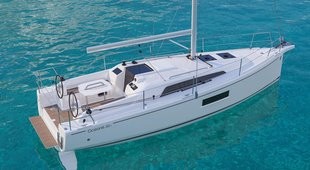
- Length 9.53 m
- Beam 2.99 m
- Draft 2.00 m
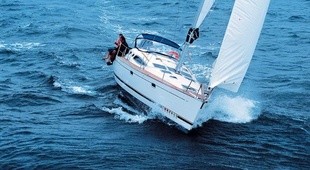
- Length 11.70 m
- Beam 4.02 m

- Length 9.95 m
- Beam 3.42 m
- Draft 1.65 m
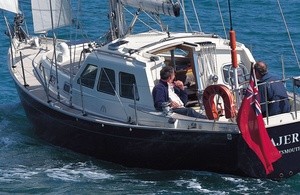
- 1997 - 2002
- Length 10.44 m
- Beam 3.20 m
- Draft 1.46 m

- 2005 - 2014
- Draft 1.44 m

- 2014 - 2015
- Length 11.58 m
- Beam 3.66 m
- Draft 1.70 m

- Length 13.75 m
- Beam 4.25 m
- Draft 2.20 m
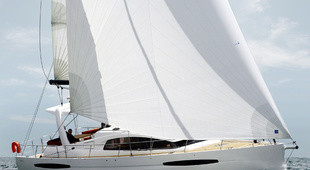
- Length 16.80 m
- Beam 5.18 m
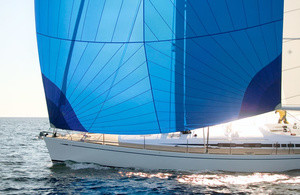
- Length 16.48 m
- Beam 4.75 m
- Draft 2.44 m
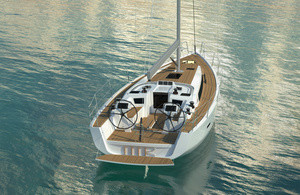
- Length 12.09 m
- Beam 3.81 m
- Draft 2.30 m
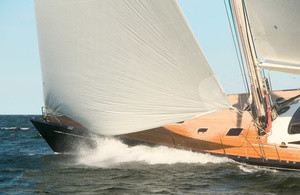
- Length 24.89 m
- Beam 5.86 m
- Draft 4.02 m

- 2008 - 2015
- Length 11.99 m
- Beam 3.97 m
- Draft 0.82 m
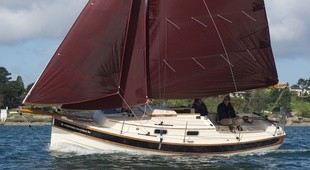
- Length 7.32 m
- Beam 2.66 m
- Draft 1.40 m

- Length 7.57 m
- Beam 2.40 m
- Draft 1.35 m
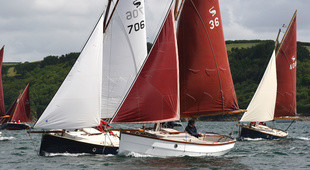
- Length 6.85 m
- Beam 2.18 m
- Draft 1.21 m

- Length 20.10 m
- Beam 5.50 m
- Draft 2.95 m
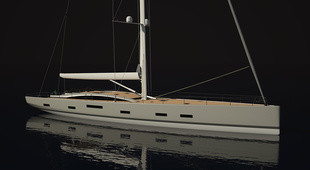
- Length 30.50 m
- Beam 7.10 m
- Draft 4.50 m
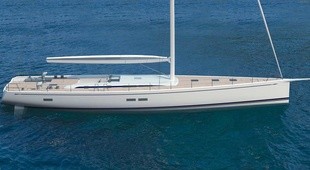
- Length 28.87 m
- Beam 6.92 m
- Draft 4.40 m
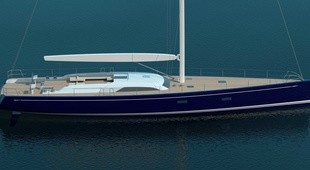
- Length 35.20 m
- Beam 8.12 m
- Draft 5.75 m
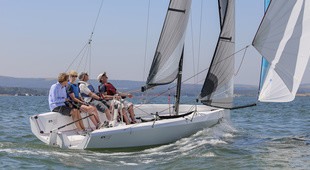
- Length 6.34 m
- Beam 2.20 m
- Draft 1.38 m
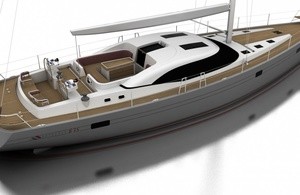
- 2013 - 2014
- Length 20.45 m
- Beam 5.65 m
- Draft 1.47 m
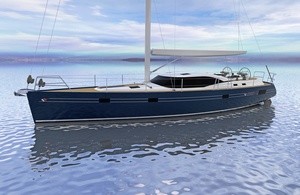
- 2012 - 2014
- Length 16.63 m
- Beam 4.80 m
- Draft 0.95 m
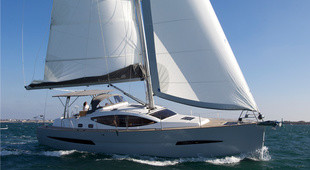
- Length 14.60 m
- Draft 1.30 m
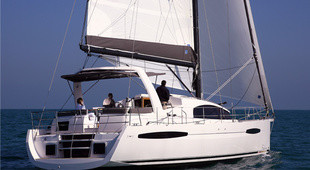
- Length 15.80 m
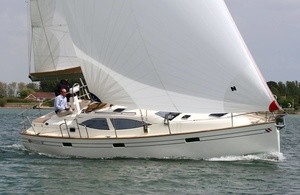
- 2009 - 2015
- Length 9.97 m
- Beam 3.60 m
- Draft 0.83 m

- 1998 - 2011
- Length 8.54 m
- Beam 2.64 m
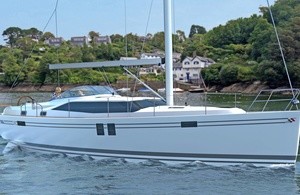
- 2014 - 2016
- Length 11.23 m
- Beam 3.90 m
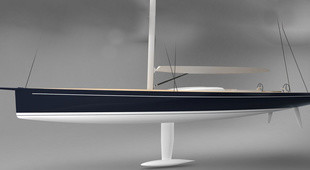
- Length 35.05 m
- Beam 8.16 m
- Draft 4.00 m
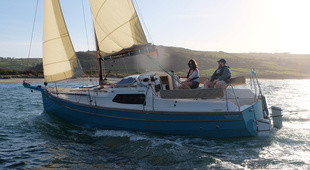
- Length 8.64 m
- Beam 2.54 m
- Draft 1.58 m
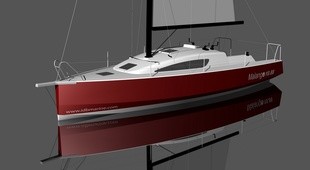
- Length 11.00 m
- Beam 4.00 m
- Draft 1.10 m
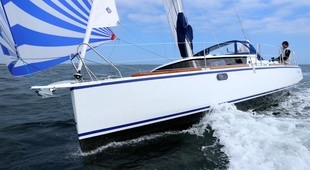
- Length 8.88 m
- Beam 3.45 m

- Draft 3.50 m
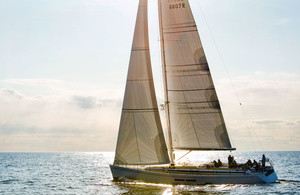
- 2006 - 2016
- Length 20.12 m
- Beam 5.39 m
- Draft 3.20 m
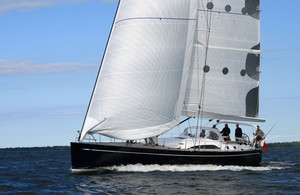
- Length 27.71 m
- Beam 6.46 m
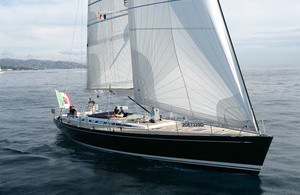
- Length 23.30 m
- Beam 5.79 m
- Draft 2.90 m
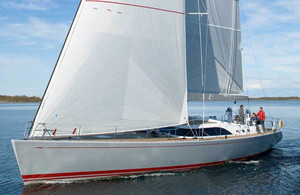
- 2012 - 2015
- Length 25.08 m
- Beam 6.08 m
- Advertising
Customer reviews

- Netherlands
- United States
- United Kingdom
Sailboat Keel Types: Illustrated Guide (Bilge, Fin, Full)
The keel type is one of the most important features of your boat. But the different designs can be confusing, so I've set out to create a very clear guide that will help you understand sailboat keels once and for all.
What are the most common sailboat keel types? The most common sailboat keel types are full-length keels, fin keels, bulb keels, wing keels, bilge keels, and lifting keels. Full keels are popular among cruisers, while fin keels are generally used for racing. Bilge keels and lifting keels are typically used in tidal waters, on small fishing boats for example.
In this article, we'll explore the most common keel types together. I'll use diagrams to really hit home the differences of all these keel types, and we'll discuss what keel types are best for liveaboard, ocean cruising, and lake weekend trips. After reading this article, you'll know what to choose - and why.
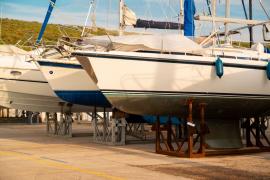
Sailboat Keels Explained
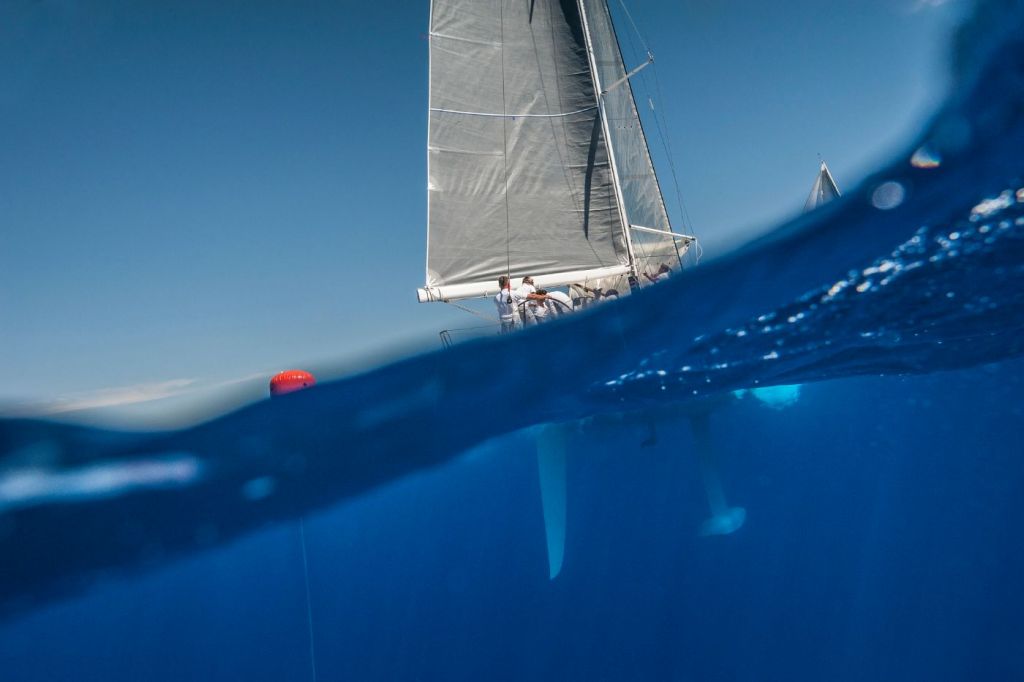
On this page:
Overview of sailboat keel types, keel types: fundamentals, modified full keel, centerboard.
If you just want a quick overview, here's a list with the most common keel types and a short description. More detail will follow below.
The most common keel types
- Full keels run from front to aft and are the most stable keel type, making them the most popular cruising keel.
- Fin keels offer the best performance but are less comfortable. This makes them popular for racing. Fin keels are bolted on to the hull and generally run deep and thin.
- Bulb and wing keels are both variants on the fin keel.
- Bulb keels carry additional ballast in the tip, making them more stable.
- Wing keels have two tips at the end of the keel, which reduces crossflow, improving directional stability.
- Bilge keels are double fin or double full kees, which allows the boat to be beached, making them the most popular keel for tidal waters.
- Lifting keels are moveable keels that can be lowered and raised, allowing the boat to enter shallow waters as well.
- Centerboard keels are a pivoting lifting keel, allowing to sail both coastal and inland waters.
- Leeboards are fins on the sides of flat-bottomed hulls boats, making a keel unnecessary.
Properties of each keel type
| Keel type | Comfort | Maneuverability | Speed |
|---|---|---|---|
| Full keel | +++ | -- | -- |
| Modified full keel | +++ | - | - |
| Fin keel | - | ++ | ++ |
| Bilge keel | + | + | - |
| Lifting keel | - | ++ | ++ |
| Leeboards | -- | -- | +++ |
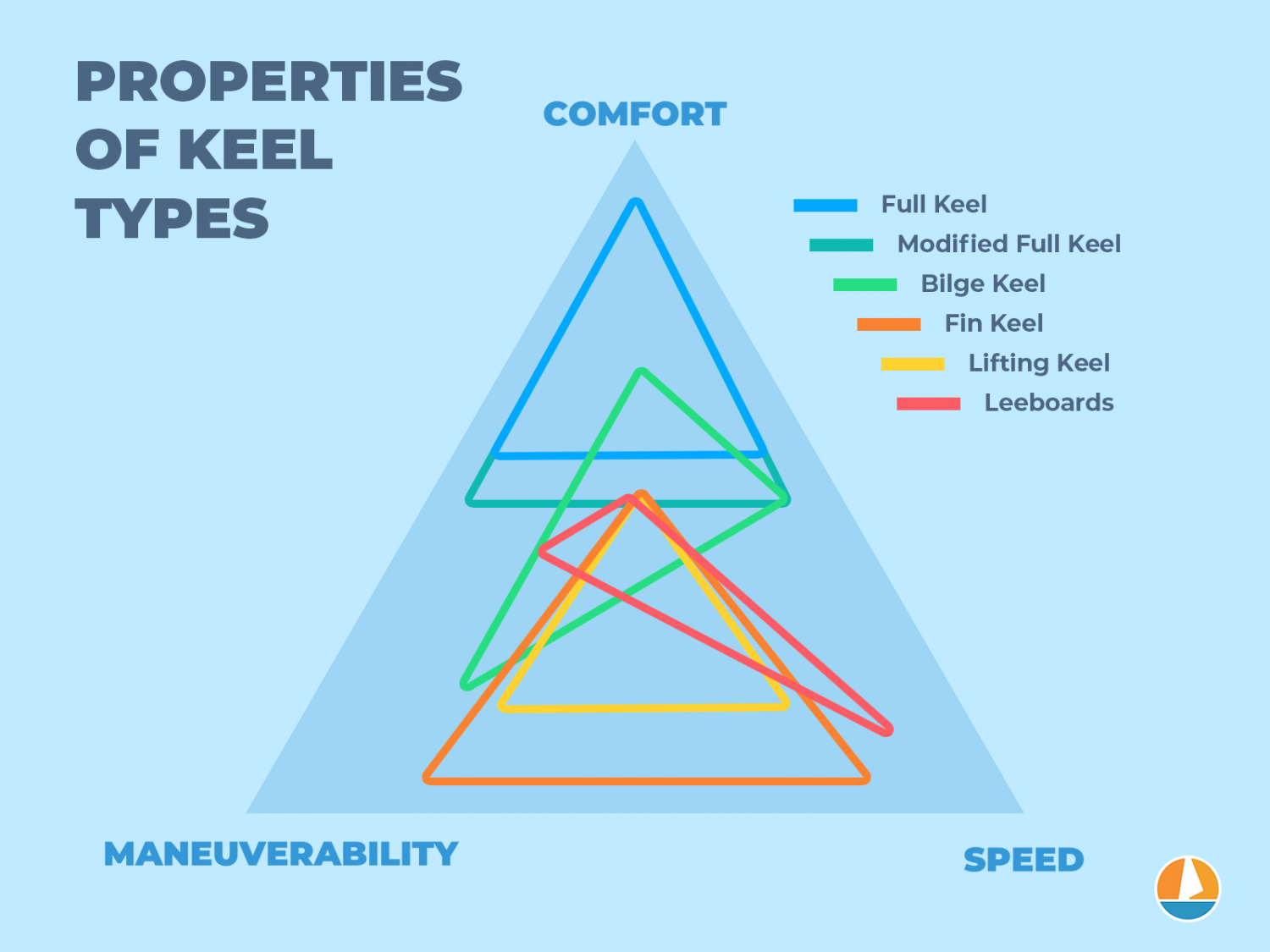
What does a keel do?
What does the keel do? A keel is a vertical blade running down from the hull. It is weighted and acts as a ballast, countering the boat's tendency to heel and preventing it from tipping over. The wetted surface under the waterline reduces slippage to leeward by creating a track, which counters the sideway force of the wind on the sails.
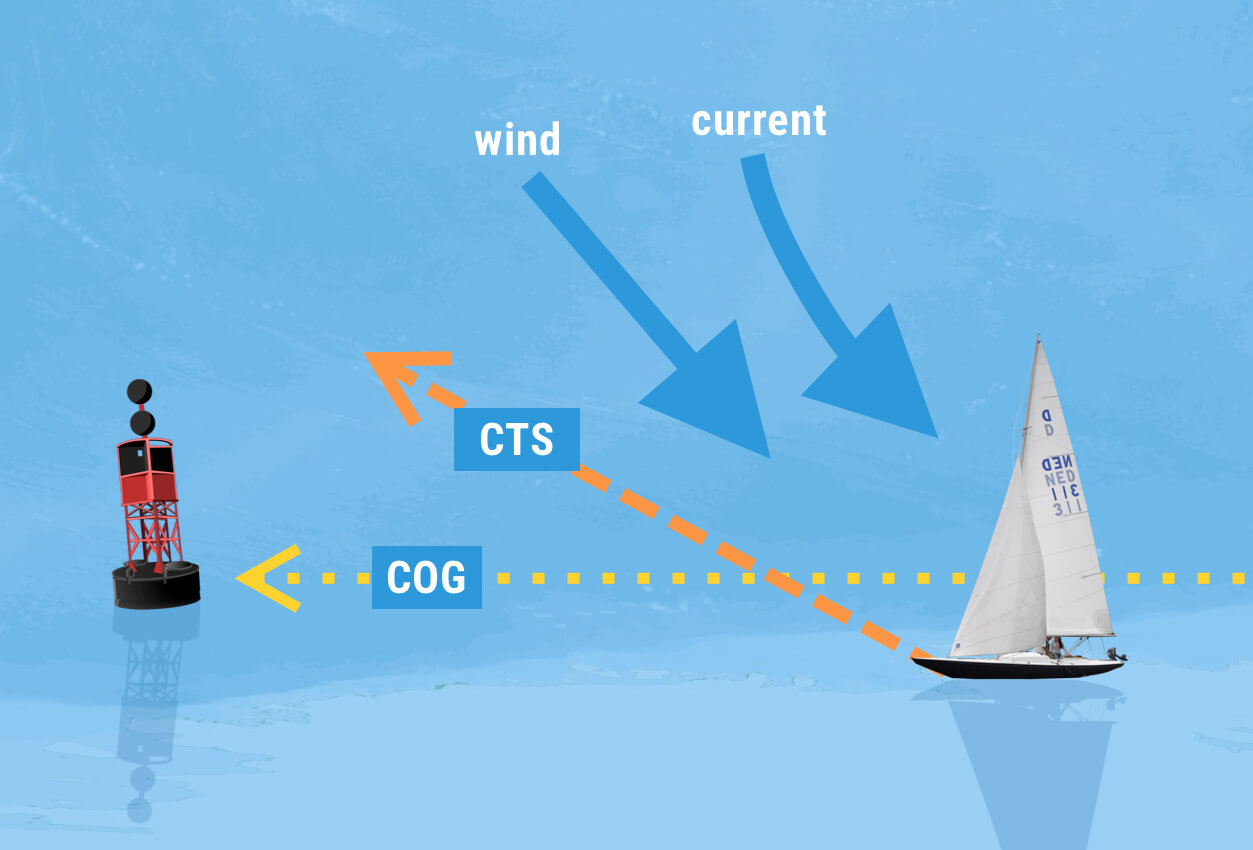
The reason sailboats don't tip over is that the weight of the keel counters the buoyancy of the hull, which means it will pull the boat downward. This downward force reduces heel and prevents the boat from rolling.
A canoe doesn't have a keel. Try stepping into that: it will want to roll.
It counters the horizontal force the wind puts on the sails. Whenever the force on the sails increases, the resistance of the water on the keel increases proportionally.
The heavier the keel, the less heel you'll get.
A keel reduces slippage to leeward. Slippage is simply the amount you fall off course because of the direction of the wind and current. Leeward is the side of the boat behind the wind.
So if you don't have a keel, you will fall off course quite a lot because the wind will push you over the water surface.
You will also heel quite a lot since there is nothing beneath the water surface to counter the force of the wind high up in your sails.
A keel fixes both of these issues and makes sailboats one of the most reliable boats in heavy winds and storms.
You can read on about how keels work here.
Keels can be classified by multiple dimensions. You can look at them from the side or the front. You can also classify them based on properties.
Before I dive into each keel type in-depth and show examples, let's make sure we have the same starting point.
There are essentially two sorts of keels:
Fixed keels
Movable keels.
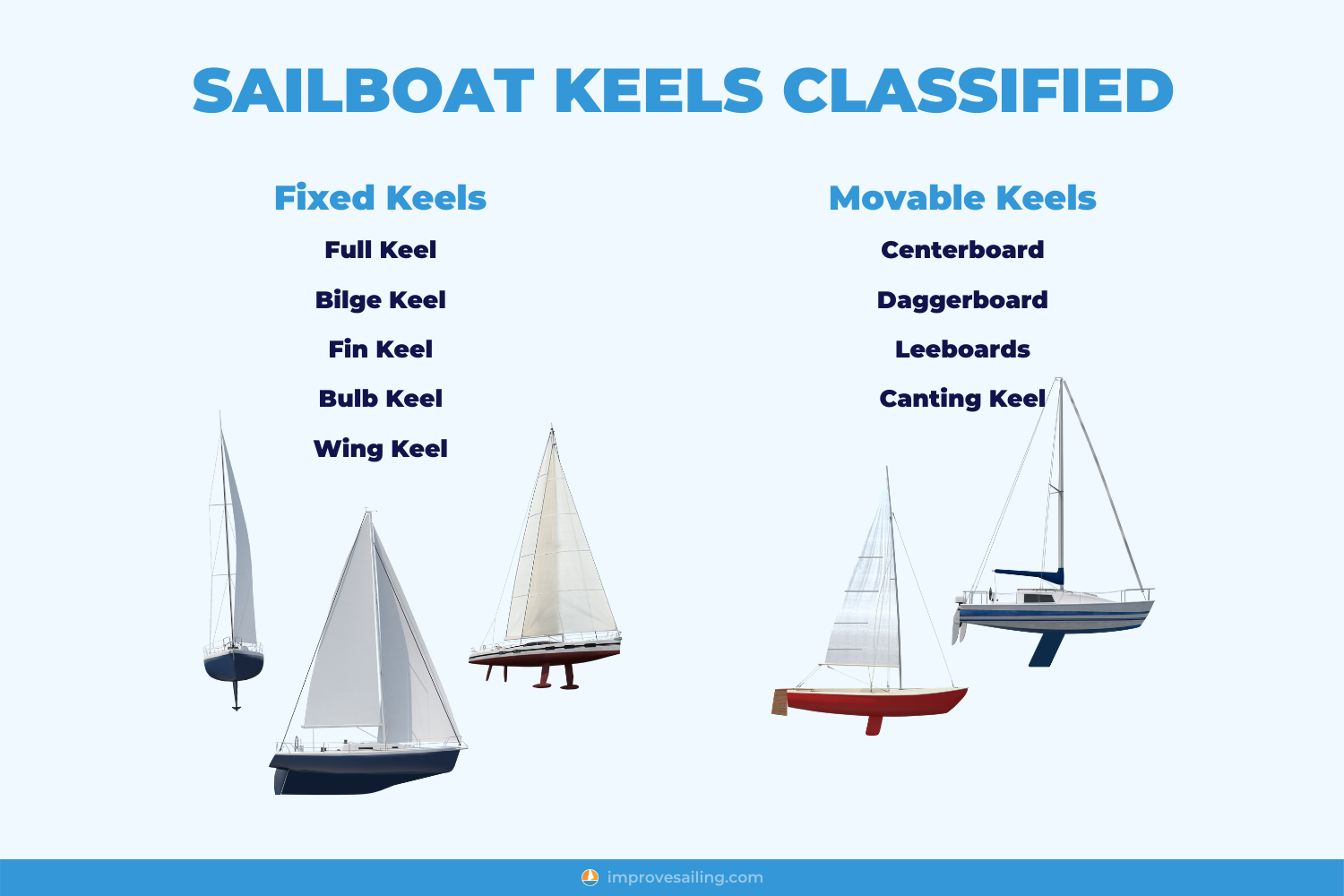
Fixed keels are keels that are integrated into the hull or bolted on. They can't be moved or lifted.
When looking at fixed keels, you can divide them up further based on the side view. There are three main categories:
Bilge keels
Full keels are more comfortable, provide better stability and protection, but are also slower than fin keels.
Fin keels are less comfortable, provide less stability, are more vulnerable, but they're also a lot faster than full keels.
Bilge keels are double keels: one on each side of the hull. This allows them to be beached, which comes in handy in tidal waters. They are generally a lot slower and less maneuverable compared to fin keels.
Movable keels can be lifted from the water, creating a shoal (shallow) draft, allowing the boat to enter both shallow waters and coastal waters. This makes it a very versatile keel type. There are two main designs:
Lifting keels
Lifting keels can be lowered and raised through a slit in the hull. Examples of lifting keels are the daggerboard and centerboard.
Leeboards are wooden swords attached to the side of the hull and prevent slippage to leeward, but they don't stabilize the boat, nor counter heel by adding ballast.
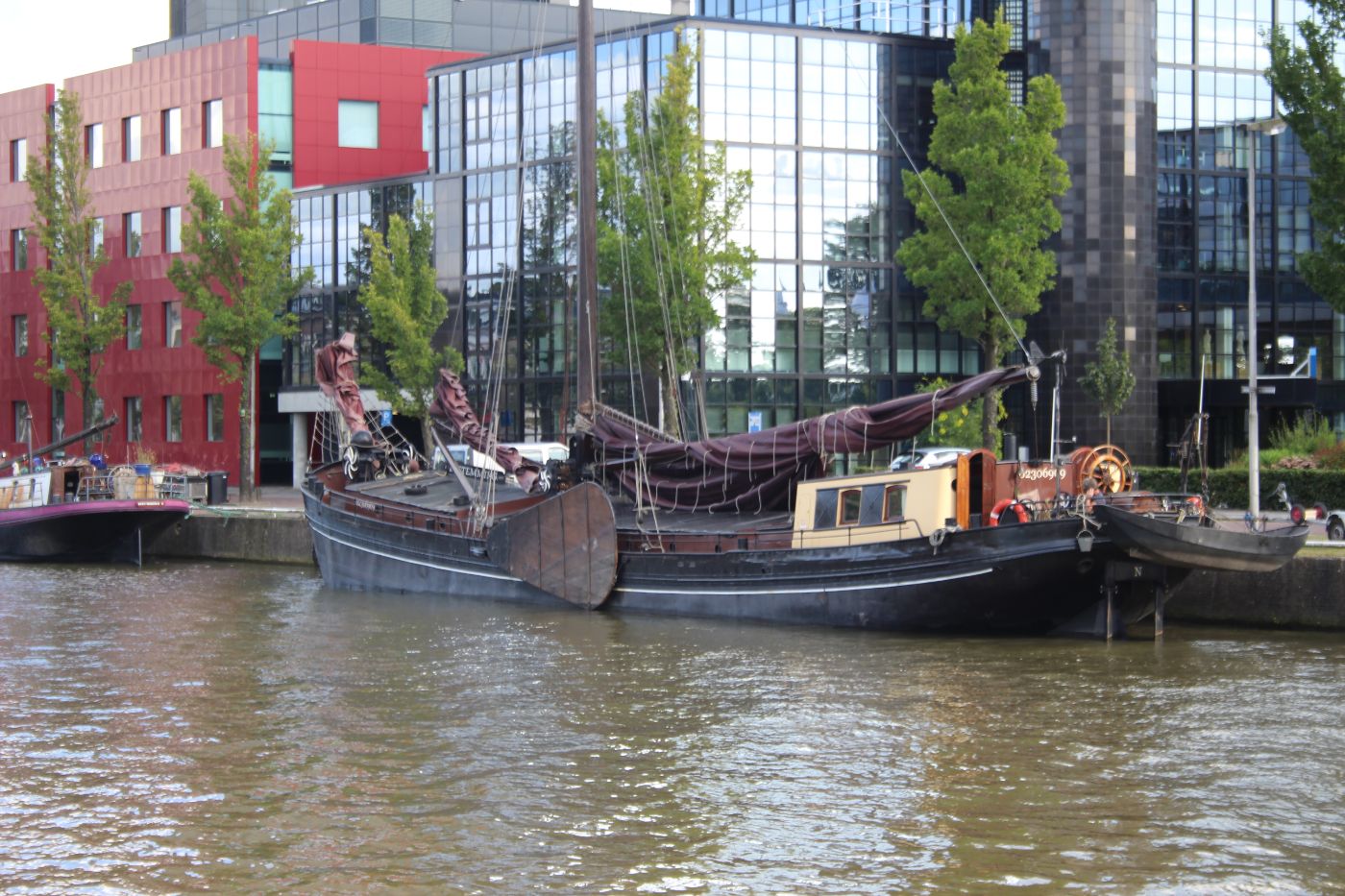
With fin keels, there are different tip designs available. The most common two tip designs are:
These are both variants of the fin keel. Generally, these keel designs are mentioned in one breath with full keels and fin keels, creating confusion on what kind of keel they are. But it's important to understand that they are a sub-category of fin keels.
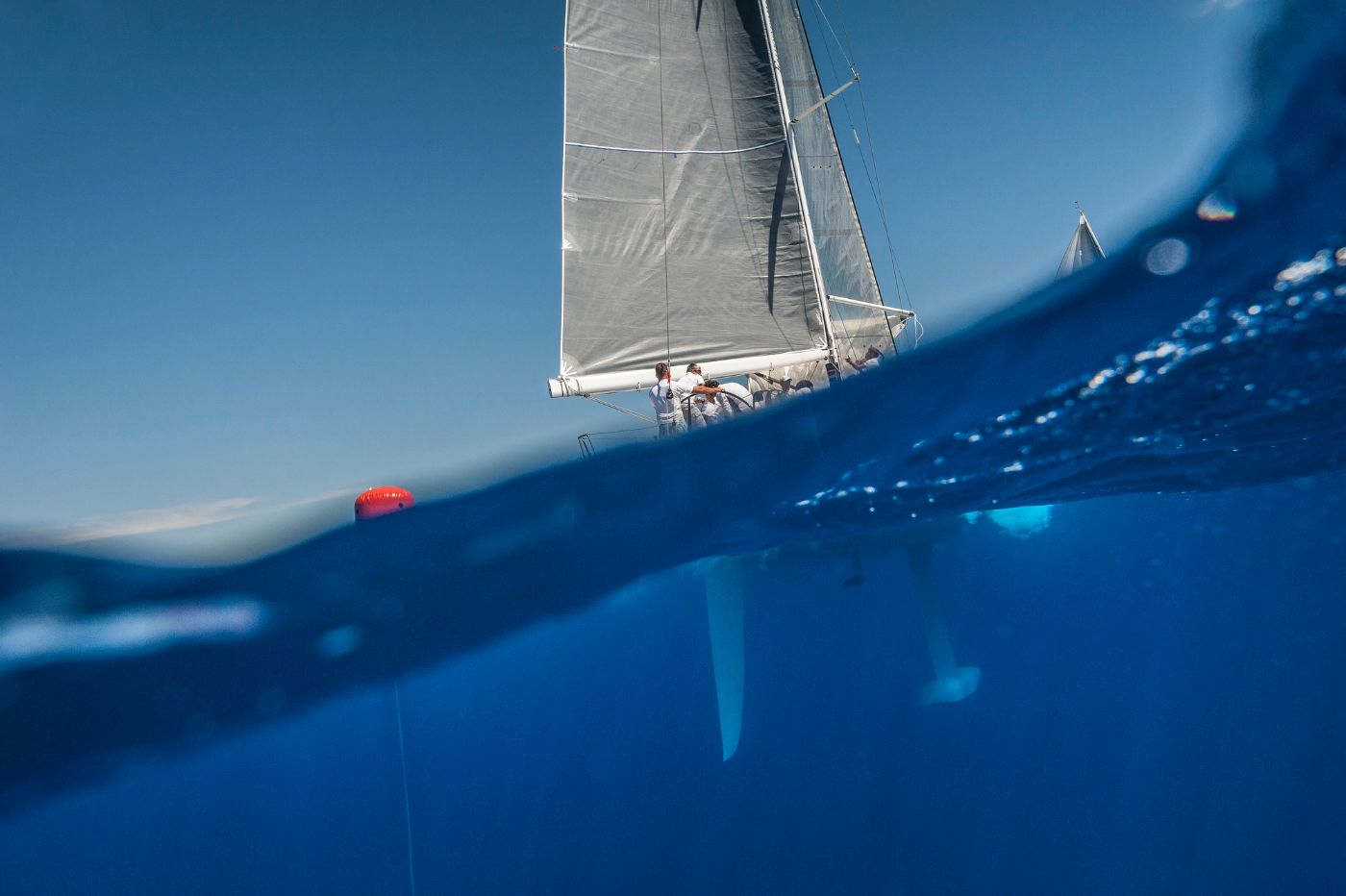
Rudder design
As with the tip of the fin, there are different rudder designs that may apply to both fin and full keels. The two most common rudder designs are:
Skeg rudder
Spade rudder.
A skeg is a structural part of the keel in front of the rudder that protects the rudder. The keel encompasses the rudder, preventing any rogue ropes, weeds, or rocks from damaging the rudder.
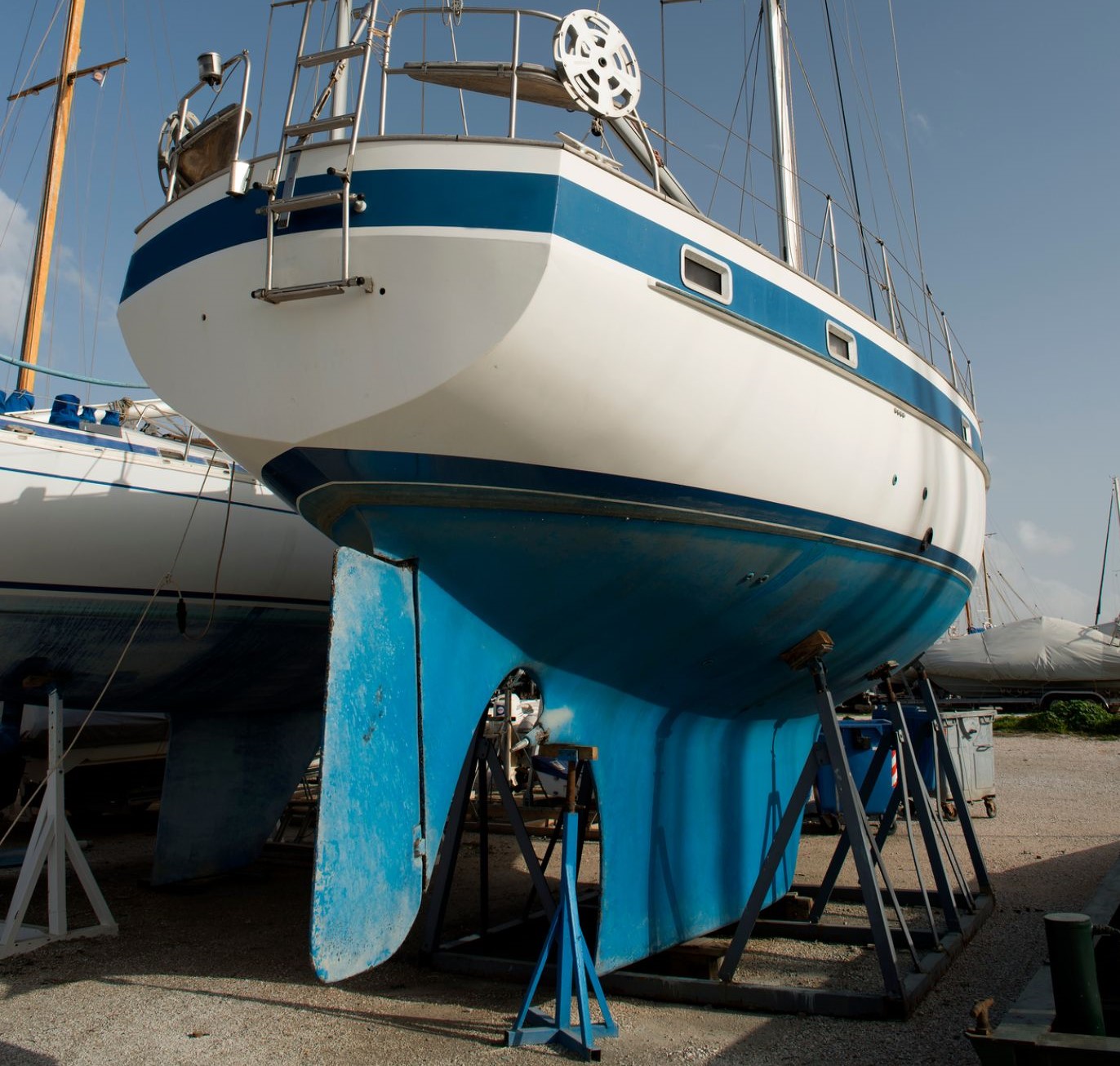
A spade rudder is an unprotected rudder: it doesn't have any structural protection from the keel design. It is simply attached to the hull. This design is very common.
Alright, we understand the big picture. Let's dive into more detail for each keel type and discuss the pros and cons.
Fixed keel Good for cruising and liveaboards Comfortable
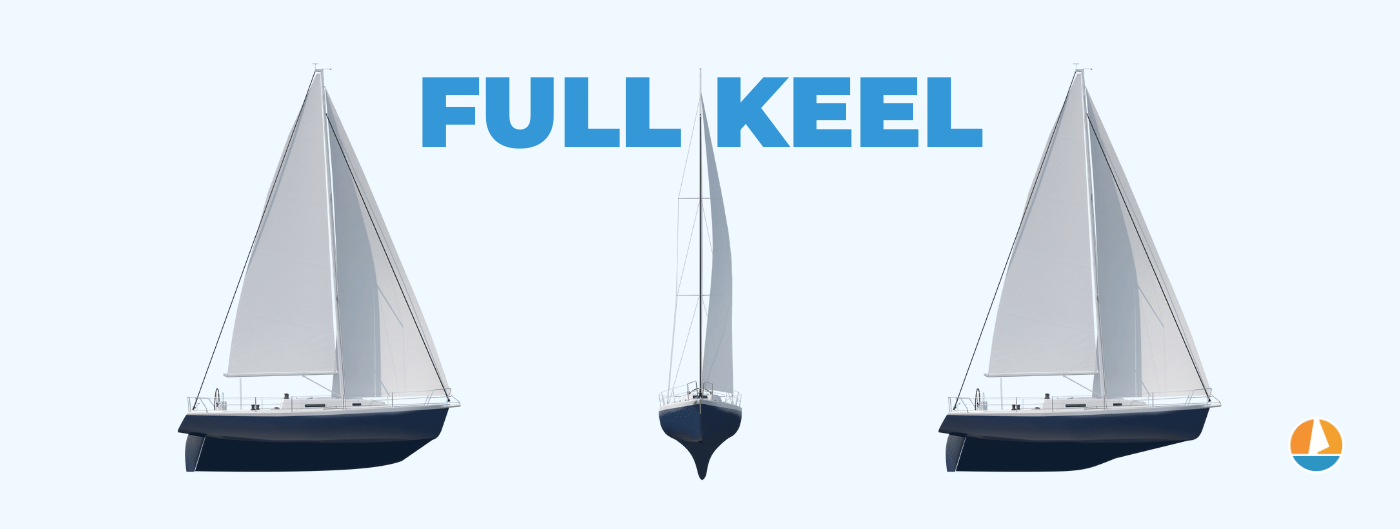
What is a full keel? A full keel runs from front to aft for at least 50% of the hull and is fully integrated into the hull. It has the largest wetted surface of any keel type, and it is also the heaviest. This results in directional stability and reduced heeling, providing the most comfortable ride, but also the slowest.
The wetted surface simply means the amount of water contact area. With such a large wetted surface, it decreases slippage to leeward the most of all keel types, while it counters heeling the most as well.
The full keel is the most comfortable and stable keel type available. However, comfort comes at a price. It delivers the worst performance due to this large wetted area. It is the slowest of the keel types, and it has the worst windward performance.
This makes full keels particularly great for longtime cruisers or liveaboards who prefer comfort over speed, but less ideal for daysailers who need to navigate in and out of slips regularly.
Since it runs for at least 50% of the hull, it doesn't need to run as deep as a fin keel, resulting in a more shoal draft.
Heavier keels result in increased displacement, so a full keel boat will need a larger sail area to compensate for its weight.
For a more detailed discussion on full keel advantages, I recommend reading William's excellent article 5 Surprising Advantages of a Full Keel Sailboat here.
Example sailboats with a full keel:
- Nicholson 22
- Island Packet 380
- Beneteau Oceanis 411 Clipper
- Beneteau First 50
- Jeanneau Sun Shine 38
- Dufour 455 Grand Large
There are a lot of great cruising boats with full keel designs , some of them considered classics.
Full Keel with skeg rudder
Full keels with a skeg rudder design have a protected rudder, thanks to putting a structural part of the keel directly in front of the rudder. This helps with fending off any hazards to the rudder, like floating pieces of rope, rocks, or garbage, and protects it in case of running aground. The skeg design ensures the rudder is nearly impossible to break off.
Fixed keel Good for cruising and liveaboards Faster than a regular full keel

What is a modified full keel? A modified full keel is a full keel with a cutout at the front, reducing the wetted surface slightly, which increases performance without sacrificing too much comfort and stability. After the full keel, it has the best directional stability and the least amount of heel.
The modified full keel is popular among (bluewater) cruisers, thanks to its increased handling and performance. Most modified full keels have a skeg rudder, ensuring it is well-protected.
The slightly reduced weight and wetted surface improve windward performance quite a lot, but it is still one of the most stable keel designs out there.
Example sailboats with a modified full keel:
- Hallberg-Rassy HR 40
- Dufour Arpege 30
- Beneteau Oceanis Clipper 281
- Jeanneau Sun Odyssey 37.2
Fixed keel Good for racing Fast
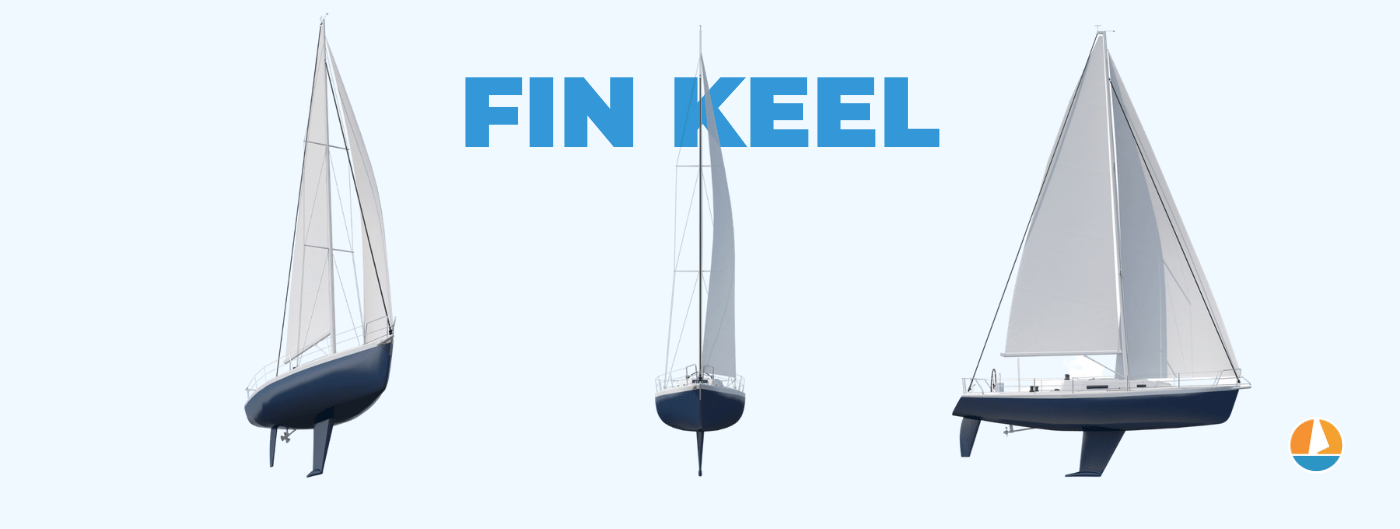
What is a fin keel? A fin keel is a long, weighted blade attached to the bottom of the hull. It is lighter, faster, and more maneuverable than a full keel, but also more vulnerable. The increased distance between ballast and sails provides a lever, reducing the need for a large wetted surface or additional ballast.
Fin keels are generally bolted onto the hull and run deeper and thinner than a full keel. They are also lighter. This helps increasing performance (a lot), making fin keels a lot faster in all situations.
There are some major disadvantages to fin keels, however. Fin keels are a lot less comfortable than full keels and allow for more heel and a less solid track, so less directional stability. Fin keels are also a lot more vulnerable than full keels. They can break off when running aground, or get damaged.
They are very popular among racers and perform better when maneuvering in tight spots, like getting in and out of slips.
Example sailboats with a fin keel:
- Catalina 30
- Jeanneau Sun Odyssey 36.2
Fin keel with skeg rudder
Fin keels with a skeg rudder use a small structural part in front of the rudder to protect it. This design is mostly integrated into the hull, making it less vulnerable, and a great compromise between speed and safety.
Fin keel with spade rudder
Fin keels with a spade rudder have a completely exposed rudder, and typically a fin that is simply bolted on. The keel isn't integrated into the hull, making it more vulnerable and less comfortable.
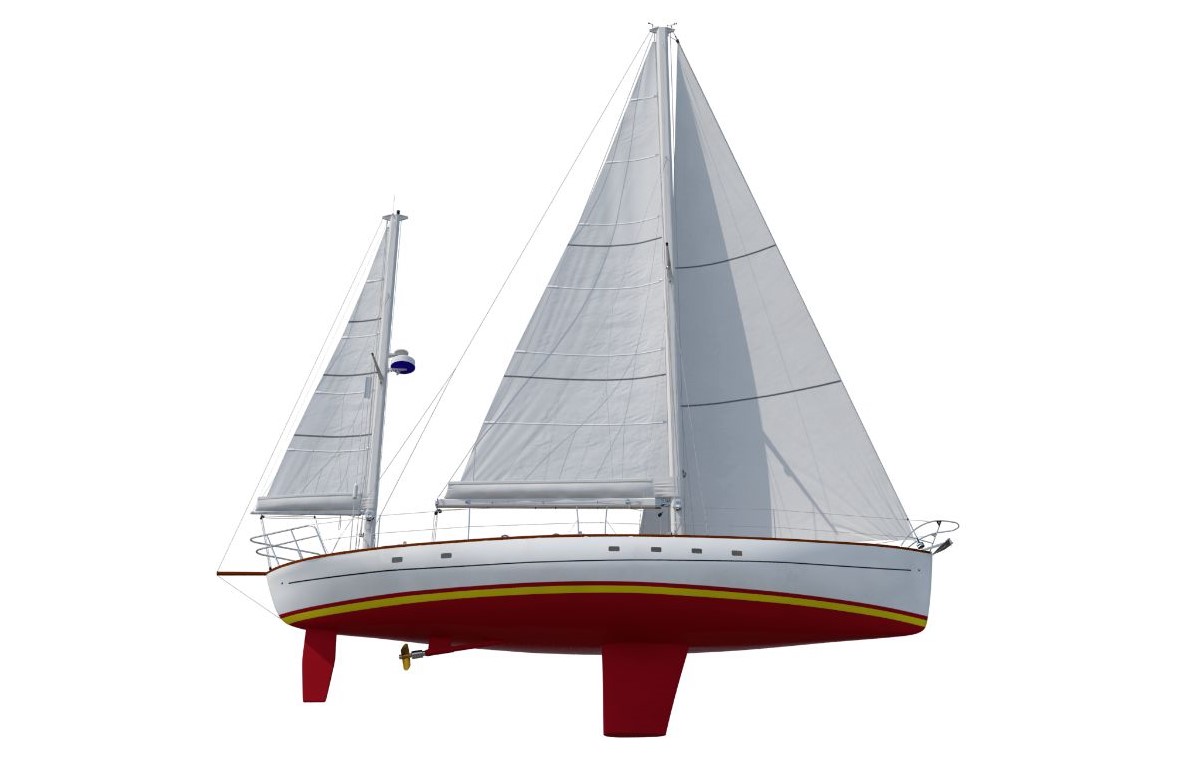
Fin keel variant Good for cruising Less crossflow
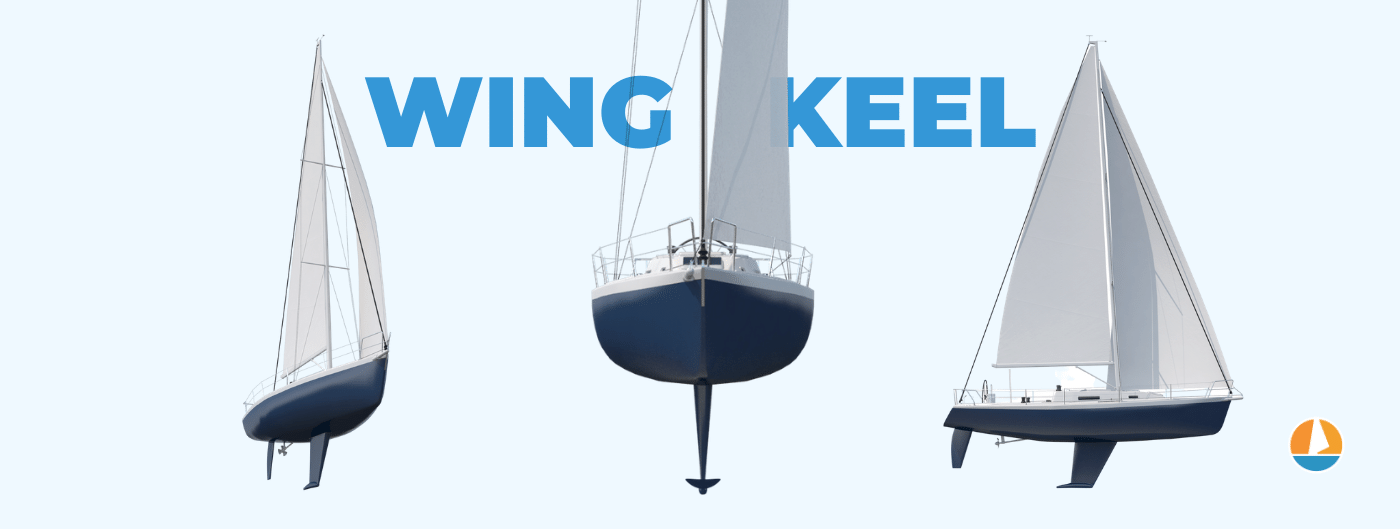
What is a wing keel? A wing keel is a fin keel with a horizontal foil at the tip, which is wing-shaped and generally weighted. Its shape reduces crossflow, improving directional stability, and its ballast decreases heel, resulting in a more comfortable ride. The addition of a wingtip allows for a shorter fin, reducing draft.
Wing keels are good for cruising since this design improves directional stability compared to a regular fin keel or a bulb keel.
We'll discuss the wing keel's advantages and disadvantages in more detail in this article.
Fin keel variant Good for cruising Stability
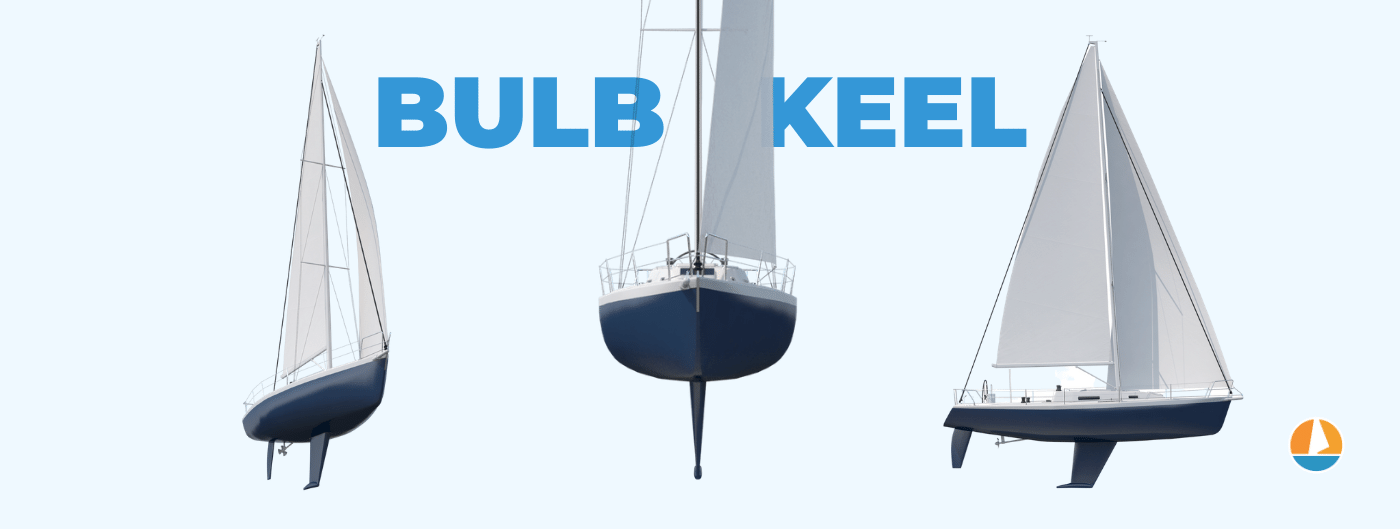
What is a bulb keel? A bulb keel is a high-aspect-ratio fin keel with additional ballast at the end, which generally has a bulb or teardrop shape. This ballast improves stability and utilizes the distance between force and counterforce as a lever. This design reduces the need for a deep fin, resulting in a shoal draft.
By placing the weight at the largest possible distance from the force on the sails, you need relatively little extra weight for the same reduction in heel, making bulb keels very effective for cruising.
This design reduces the wetted area while increasing the weight of the keel just slightly, which increases sailing comfort big time.
Example sailboats with a bulb keel:
- Bavaria B/One
- Beneteau First 24
Fixed keel Good for racing Can be beached

What is a bilge keel? A bilge keel is a twin keel which uses double fins, allowing the boat to be beached and rest on its keel upright. Bilge keels have double the wetted surface, which increases comfort and directional stability while decreasing heel. Modern bilge keels often provide decent windward performance, thanks to better design.
The bilge keel does sacrifice speed compared to the fin keel but doesn't necessarily offer worse performance overall. Older designs performed considerably worse than other keels and were especially slow.
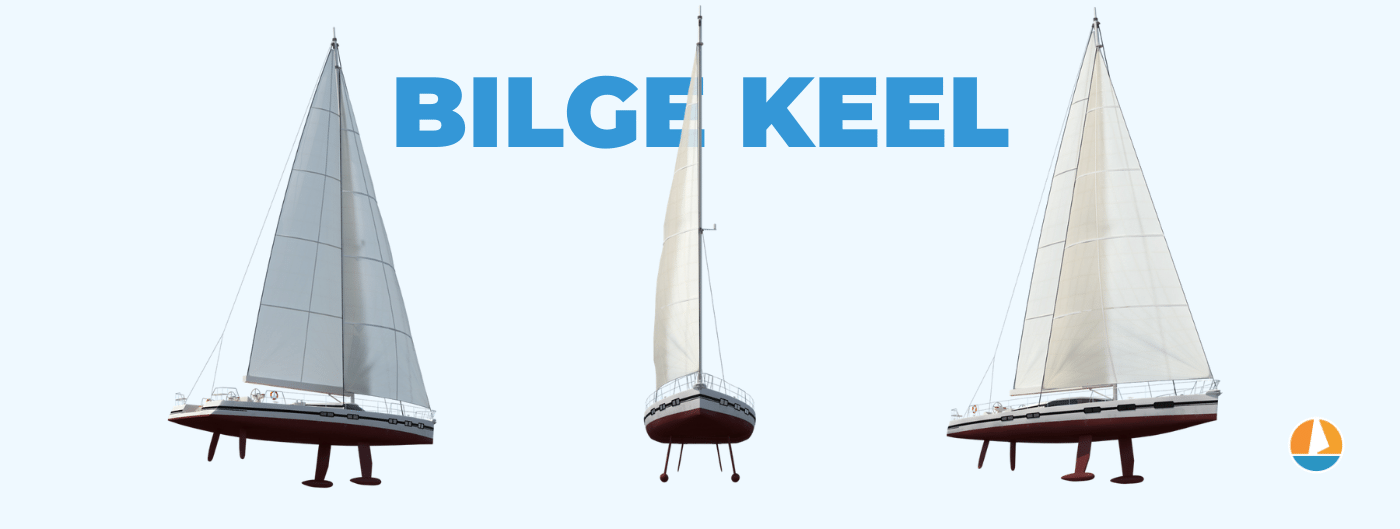
Bilge keels have some major advantages over full keels and fin keels. The most important is that the boat can be beached, making it a popular design in tidal waters. Bilge keels are especially common along the British coastline, where fishermen keep their boats in tidal harbors.
Another major advantage is that the boat can be stored resting on its keels, making dry storage and maintenance a lot easier.
Of course, there are many more pros and cons to the bilge keel , which we go into here.
Example sailboats with a bilge keel:
- Dufour Dynamique 62
- Hunter Duette
- Patagonia Patago 39
- Macwester 27
Lifting keel Good for daysailers Versatile

What is a centerboard? A centerboard is a type of retractable keel that rests on a hinge and can be lowered through a slot in the hull. It folds out like a pocket knife and allows you to increase or reduce the draft of the boat. Centerboards are mostly used on small fishing boats.
The centerboard is a very versatile keel type, allowing you to have both a very shoal draft for inland waters, as well as steadying the boat and reducing heel for larger bodies of water, or even oceans.
I've sailed a Cornish Crabber with a centerboard for a week, and while we stayed inland, having the option to increase the keel depth really came in handy when crossing the IJsselmeer (a former sea in The Netherlands).
There's more to the center
Olaf Roethele
https://www.theyachtmarket.com/en/new-boats/cornish-crabbers/adventure-17/218/
My name is Olaf and I am the owner of a Cornish Crabber 17 Adventure boat.
I would like to ask you if you can imagine to install on this boat a Torqeedo 2.0 Pod motor? Therefore i guess a modification of the keel/skeg is necessary ?!
Best regards from Uruguay,
You completely missed the hybrid planing/water-ballast keel of the Macgregor range
Thanks a lot for this explanation
Roger Bannon
Very well written article which provides an excellent guide for us small wooden boat builders. Thanks.
Leave a comment

IMAGES
COMMENTS
Super Seal 26 and Parker 27. This is a fast cruiser-racer that promises rewarding and responsive sailing in an attractive overall package. Most of the ballast is encased in the bottom of the hull, which makes the keel lightweight and easy to raise or lower. While this comes at the expense of righting moment, a ballast ratio of 45 per cent helps ...
Category Description. Lifting keel as an option is offered by many famous brands - Oceanis, Delphia , Nautor's Swan, Wally, Oyster among others. This technical solution is in demand for boats of all sizes. The use of a lifting keel allows to reduce the draught of the boat when entering shallow water areas (or marinas with shallow depths) and ...
This boat also features a lifting centerboard that reduces the draft by 2' 7". Depending on the year and the seller of the vessel, these boats are selling for an average price of between $30,000 and $45,000.00. 7. Norseboat 21.5. The Norseboat 21.5 is the largest model in the Norseboat line with a length of 21' 10".
A swing keel, also called a lifting keel, is a type of sailboat fin that can be retracted through a slot in the hull, which reduces draft and allows swing keel sailboats to navigate shallow waters like rivers. The keel rests on a frontal hinge and is generally lowered using a hydraulic ram. Having a swing keel has some unexpected advantages ...
Arcona 435. The Performance Cruiser winner at the 2019 European Yacht of the Year awards, the Arcona 435 is all about the sailing experience. She has genuine potential as a cruiser-racer, but her ...
The result is the 26RK with more waterline, more buoyancy aft, and a lifting keel. One of the larger boats on this list, the Seaward 26 RK, is still easy to move over land with a trailered weight under 6,000 pounds. The boat alone displaces 3,800 pounds, with 1,200 lbs. of that in retractable ballast with a bulb on the bottom.
Luckily, there are models designed with precisely this issue in mind - so without further ado, here are 13 sailboats that you can easily put on a trailer and drive to a body of water of your choice. 13 popular sailboats with lifting keels that can be trailered. Hunter 22. Beneteau First 18.
Alternatively, this lift keel version reaches down to 2.97m/9ft 8in, which is the draught of a Class 40 race boat and a substantial difference in potential pointing ability. Then, at the push of a ...
The Rustler 57 has the option of being fitted with a lifting keel. Its 2.0 (6ft 8in draft makes her a more versatile cruising yacht. In the centre of the keel is a bronze fin that has a chord as wide as the depth of the lead stub. When the blade is retracted, the yacht only draws 2.0m / 6ft 8in and she still sails well.
With its distinctive range of bare aluminium lift-keel cruisers, Alubat's Ovni brand has been synonymous with bluewater cruising since the 1970s. After a barren period it came out with a ...
The standard keel on our yachts is a fin keel. Most sailing boats today use a fin keel because it gives a good all-round performance on all points of sail. By keeping the ballast lower it gives the most comfortable motion. ... most lifting-keel yachts cannot rely on keel weight for stability so their hulls need to be designed with extra form ...
While the boats are very much aimed at the cruising - rather than performance - end of the spectrum, the general advances in yacht design and construction over the past few decades mean they are well worth considering for anyone who wants a twin-keel boat with good performance. Lifting keels are another option if draught is important to you ...
The Swan 115 S is a 115'6" (35.2m) fast cruising sailboat designed by Frers Naval Architecture & Engineering (Argentina). She is built since 2015 by Nautor's Swan (Finland). The Lifting keel version features an appendage configuration without compromise between draft and performance. Only drawback: some space is taken inside by the keel. The Swan 115 S is as well listed, on Boat-Specs.com ...
15m Performance Cruiser. This 15m blue water performance cruising yacht with lifting keel has been designed for comfortable trans ocean sailing. The yacht is suitable for construction in either aluminium alloy or composite materials. The new Owen Clarke 50' has all the comforts expected for extended cruising and by altering keel configuration ...
Qilak is a custom sailing yacht design, an Owen Clarke designed blue water lifting keel expedition yacht, a cruising explorer of the Arctic, Antarctic and the North West Passage. She is built from aluminium and was launched in September 2018 at KM Yacht Builders, Holland.
A rugged aluminium sailing yacht with a lifting keel for exploring remote cruising destinations. LOA: 56'-2" LWL: 47'-4" Beam: 15'-10" Draft (keel up): 3'-2" Draft (keel down): 8'-9" Displacement: 55,000lb Ballast: 21,460lb Fuel: 507gal Water: 258gal Engine: John Deere 4045TFM 135HP@2500RPM. A young couple in Capetown, South Africa, with two ...
Pros of lifting keel. A lifting keel is a type of keel that can be raised or lowered, allowing you to adjust the depth and balance of your sailboat. When properly utilized, a lifting keel can provide a number of benefits to enhance your sailing experience. Versatility: A lifting keel allows you to sail in shallow waters as well as access ports ...
As part of a new 41' cruise sailing yacht project, one of the conditions was the adoption of a mobile drift, for low seas, without precluding good sailing and displacement performance light. ... Tofinou 9,70 was launched by the leading French boatyard Latitude 46 with our lifting keel mod. 2,5. boot 2018 Dusseldorf. We will be happy to ...
He also required the yacht to be able to dry out on the beach, have a shallow draft, while still performing well. For this, OC designed a manual lifting lift keel and torpedo bulb, providing a minimum draft of 1.05m and max draft of 2.6m. The hybrid fin and deep sailing draft results in a relatively light sailing displacement of 6,500kg.
How keel type affects performance. James Jermain has tested hundreds of yachts in his 30 years as Yachting Monthly's chief boat tester. The performance and handling of a yacht depends on many things, but perhaps the most important single feature is the shape of the hull and the profile of the keel. Over the years hulls have become shallower ...
Nautor's Swan 80. 0 offers. 2012 - 2015. Length 25.08 m. Beam 6.08 m. Draft 4.00 m. Sailing yacht with lifting keel.
The most common sailboat keel types are full-length keels, fin keels, bulb keels, wing keels, bilge keels, and lifting keels. Full keels are popular among cruisers, while fin keels are generally used for racing. Bilge keels and lifting keels are typically used in tidal waters, on small fishing boats for example.
The lifting keel is a very important accessory when you speaking of cruiser - racers sailing yachts. This kind of keel allows to associate high sailing performances with the convenience of access to bays and harbors with a limited depth. Therefore allows to fully enjoy your boat. All this provided that they are designed and implemented in a ...